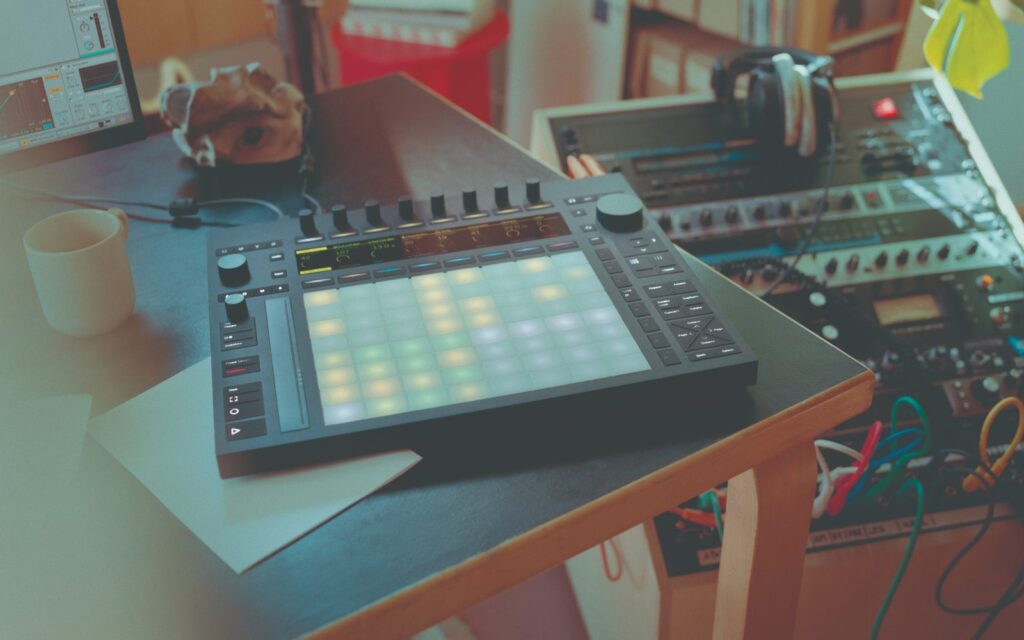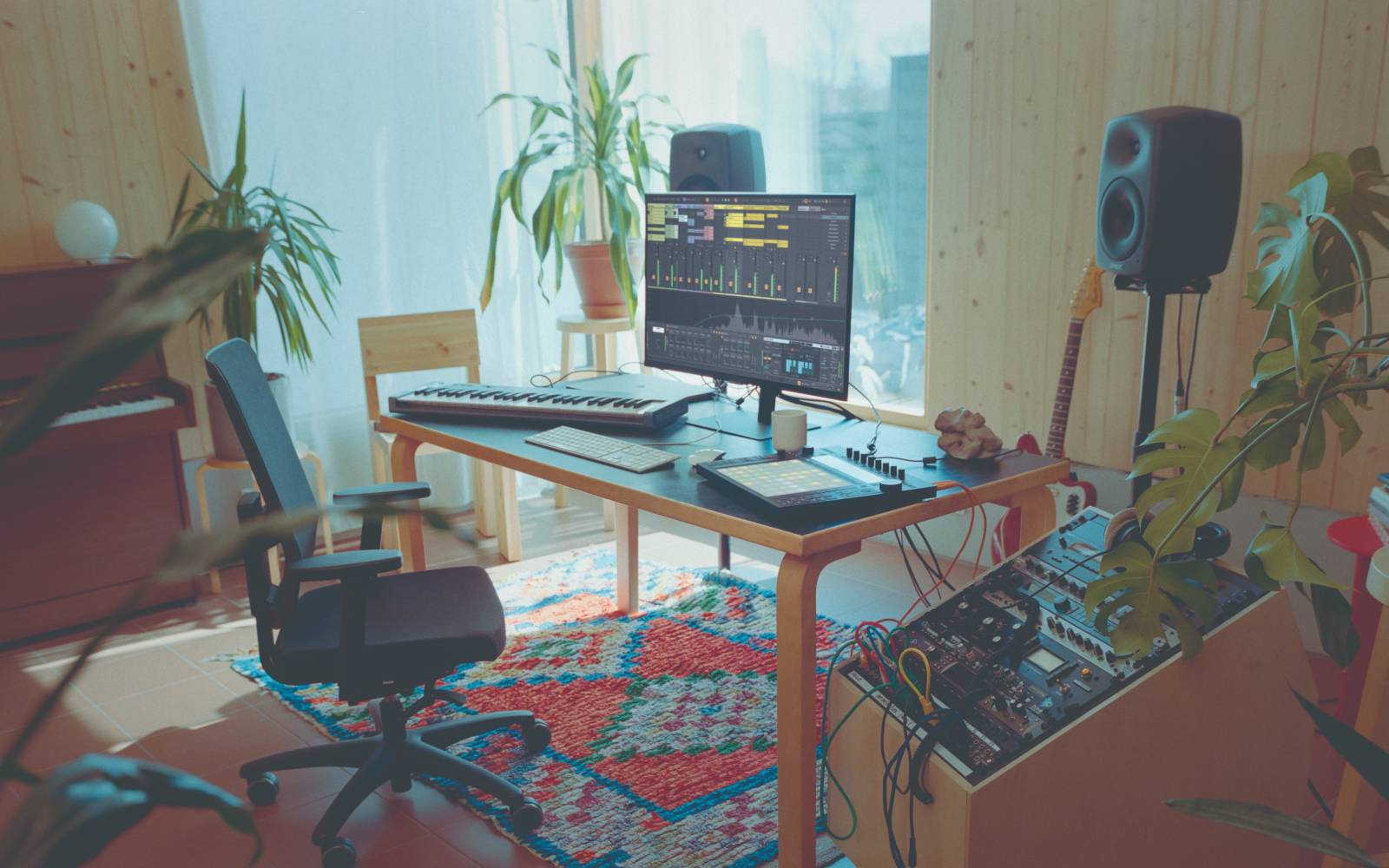Ableton Live 12 arrived worldwide earlier this year, and with was a huge array of updates, upgrades to both sonics, workflow, user-interface and more.
Not content with just that, Ableton Live 12 continued to release and update their iconic DAW, with Ableton Live 12.1 going into Public Beta testing recently. The Ableton 12.1 Public Beta brings with it an updated Drum Sampler, as well as MIDI improvements including MPE-specific MIDI Transformations, a refined Limiter and Saturator and more intuitive updates for creating and performing on Push. The update also adds Auto Shift, a real-time pitch tracking correction device. We caught up with Belle Murphy, a Ableton Certified Trainer and electronic music maker about her experience with the new updates in the real world!
What is the intended use of Auto Shift?
The obvious thing to do with Auto Shift is to pitch correct your vocals, whether subtly or to the more extreme “hard tune” effect. Tuning vocals is pretty common, and it can be an impactful part of your creative workflow. Even if you’re a very practiced singer, you’ll probably write a different kind of song when using it. However, Auto Shift has a lot more potential than that. Because it accepts polyphonic MIDI input it’s a damn good harmoniser. Think Imogen Heap’s “Hide and Seek”. Plus, formant shifting in real time (which you can easily automate or externally control on real time input, unlike clip warp settings) can be lots of fun.
Read all the latest features, columns and more here.
Push 3 is really making huge moves to make Ableton more tactile. Is this focus to help performers use Ableton in a live set, or to make producing and making music faster?
Push has always both served the role of tactile studio tool and live performance control hub. There’s lots of recent little quality of life improvements for the studio, like the ability to create device groups, re-order tracks, and the same browser improvements seen on the desktop software. That stuff is even more meaningful for working on tracks in Push 3 standalone.
One of the exciting new live performance features for Push 3 I’m really enjoying is the ability to interact with macro variations. Lots of music uses moments of increasing tension before a big resolution (i.e. the build up to the drop). With macros you can bend things out of shape and then recall the “resolution” macro setting right on the downbeat, lots of fun.
For someone from a more audio-focused background (i.e. a mic on a drumkit), the Improved Limiter and Saturator is a huge step forward for mixing in Ableton, especially with mid/side processing available. Can you speak a little to how this might help people achieve the sounds they’re chasing?
Limiting mid vs. side can be a good way to go for perceived loudness without unintentionally sacrificing clarity of stereo image. Typically, the “side” information isn’t as loud or dynamically active.
When big spikes in the mid frequencies hit a master limiter, the whole track pumps with them. Working in mid-side means you’ll probably find the spacious quality of your track doesn’t get pushed back when those hits happen. For the Saturator, I think the interface is just a lot more streamlined and intuitive. I appreciate the refined ability to clearly attenuate impact on the low end, including expanding out a full spectral view of how that “colour” is being applied across the frequency range. Drive can really mess up the low end if not applied carefully, but here you can push how the high end growls without sacrificing the low end power/weight. Of course, that works great with the new Bass Shaper curve too.
Auto-tagging is a really exciting development for something that doesn’t make sound per se. Could you explain what users can expect when opening their sample libraries in 12.1 for the first time?
Think of this as an extension of the “similar sounds” technology. With the ability to analyse and interpret audio, the next step has been to identify what type of sound is within each file. If you’ve never done any manual tagging, select the “user” creator tag (i.e. your own samples / project sounds) in 12.1 and you’ll see all the other tags that have been automatically set up for you. Mostly I’ve found this is top level stuff so far, like what sort of instrument is found in the sample, and whether it’s a loop or a one shot. That’s a huge help with the busywork of organising a complex library of sounds. Of course, you can customise the tagging further from there or just turn auto tagging off if you’d prefer.

Anything you’d like to add?
I’ve been working on a live performance project lately, and there are some new features that I’m already making use of. I’m having fun experimenting with Drum Sampler in a live set. The “FX” work great as momentary effects, especially the stuttering you can get with the “stretch” option. It also might seem like a small thing but little Push 3 updates like the “select on launch” feature now being customisable in standalone are huge. Plus, because the Push 3 standalone can act as a Wi-Fi hot spot. Alongside helping with file transfers it’s now also super easy to use Link (the tempo syncing feature) with other devices like an iPad. I had some apps recording and syncing sequences to my Push 3 standalone without any other devices or cables in seconds.
Keep reading or join up to the Beta program here. Check the full suite of release notes here.

